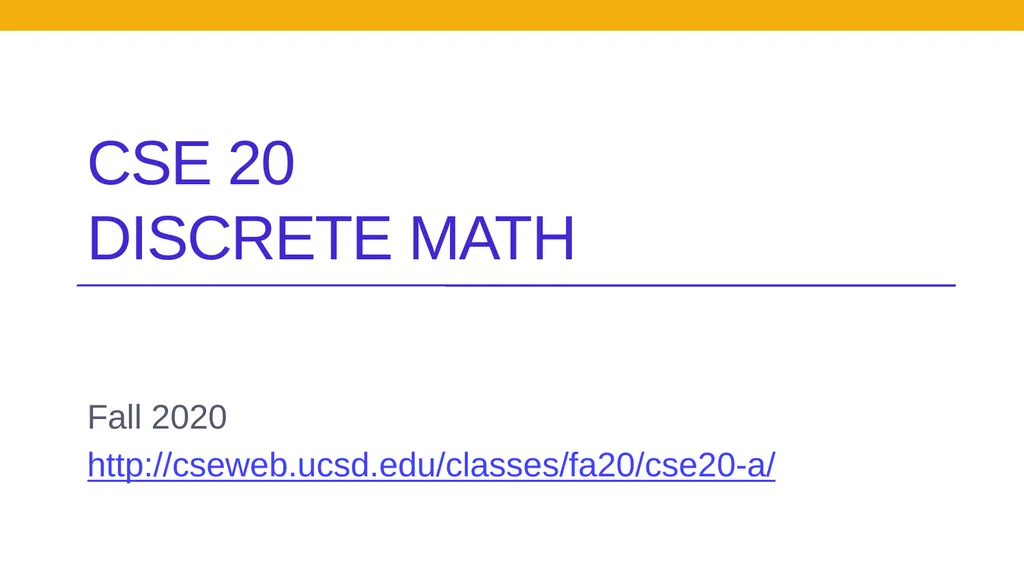
Author : sherrill-nordquist | Published Date : 2025-05-12
Description: CSE 20 Discrete math Fall 2020 http:cseweb.ucsd.educlassesfa20cse20-a Todays learning goals Trace an algorithm specified in pseudocode Define the base expansion of a positive integer, specifically decimal, binary, hexadecimal, andDownload Presentation The PPT/PDF document "" is the property of its rightful owner. Permission is granted to download and print the materials on this website for personal, non-commercial use only, and to display it on your personal computer provided you do not modify the materials and that you retain all copyright notices contained in the materials. By downloading content from our website, you accept the terms of this agreement.
Here is the link to download the presentation.
"CSE 20 Discrete math Fall 2020"The content belongs to its owner. You may download and print it for personal use, without modification, and keep all copyright notices. By downloading, you agree to these terms.













